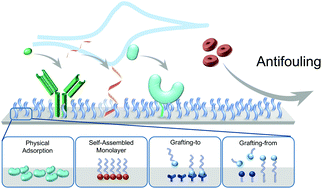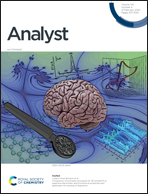Antifouling strategies in advanced electrochemical sensors and biosensors
Abstract
Electrochemical biosensors have been applied in a broad range of clinical applications for pathogen biomarker detection and medical applications and diagnosis due to the sensitivity of electrochemical methods and the bioselectivity of the components. The complexity of clinical conditions with various biofoulants (proteins, cells, polysaccharides and lipids) severely influences the reliability and stability of sensors for direct detection or immersion under changing conditions. Therefore, designing an antifouling sensing platform that can effectively reduce undesired binding to maintain biosensor performance in optimized analysis is necessary. For this purpose, the fundamental mechanisms of fouling materials and commonly used biocompatible antifouling components have been discussed, and the relevant effective modification strategies are introduced in this review. Recent advances in these strategies are demonstrated in examples with analysis of essential modification methods for reliable sensing in non-specific binding solutions or complex biofluids. The challenges and future perspectives of modification strategies for current clinical application are also discussed in this review.



 Please wait while we load your content...
Please wait while we load your content...